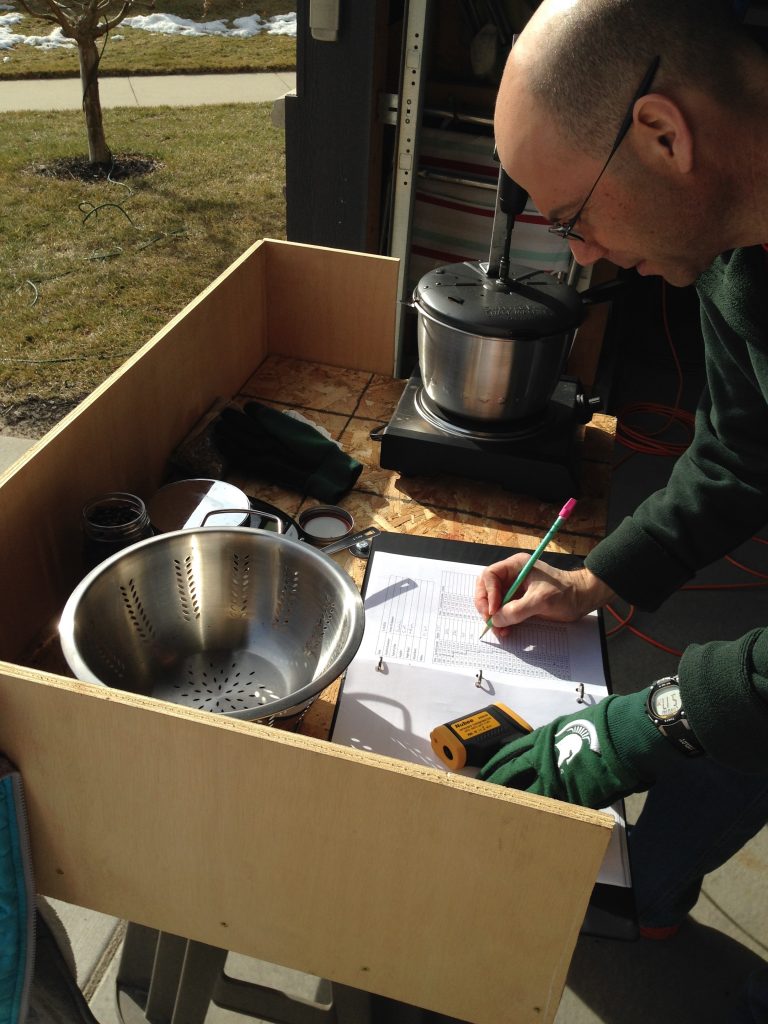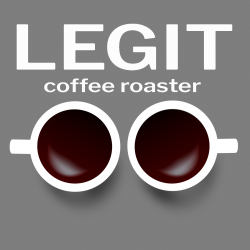The beginning of my story is relatively simple. In December of 2014 I bought my wife a gift of a bag of coffee from a local artisan coffee roaster. Up until this point we had mostly drank what I would call normal coffee from larger local roasters, much of which was flavored. This artisan roasted coffee I purchased was likely a blend of some Southern American countries. One cup into the first bag I realized that I could never go back to a coffee that was mass produced flavored with oils.
I thought to myself that my wife and I wake up every morning and share a moment to taste and enjoy a cup of coffee together. When we got that specialty blend it literally changed the way we woke up. I sat up with excitement. I was actually looking forward to experiencing that amazing taste and savoring the wonderful bouquet of flavors. Our simple routine had changed for the better.
I’m a compulsive hobbyist. If there’s something worth doing, I’ll find a way to make it an unhealthy obsession. Learning about this new type of amazing coffee became just that, a wonderful new obsession. While not clinically diagnosed, my friends and family describe me as obsessive compulsive, sometimes as a compliment and sometimes with an exasperated sigh. I have an obsessive thirst for knowledge and information. I need to understand all aspects of something if I’m getting involved. I discovered that the home coffee roasting world is much like the home brewing world was 20 years ago. It’s slowly growing and there are enough suppliers and information out there that I could start roasting in my home.
A benefit of being a compulsive hobbyist, is that I am adept at disappearing for hours researching with no real goal. The quest is simple the journey of exploring, there is no finish line. I was so excited to learn and enjoy some great coffee along the way. Initially, I hid my roasting from my wife, the last thing I needed was another hobby/obsession. I had an air popcorn popper hidden in a box in the garage. I would go out to there after my family had gone to bed and I would make coffee in the dark in the middle of the winter. Seriously, I’d tiptoe out there and open the garage door and make coffee in a snow storm at midnight on a Tuesday. The next day I’d just put the coffee in the grinder before anyone knew where it was coming from.
There was some success early and a lot of failures. Once I nearly burned down the garage (shhh, my wife doesn’t know that story). I learned, I tweaked and I got better. I would keep copious notes which lead to hundreds of tiny trial and error experiments in my garage. Eventually my wife noticed what I was doing, which worked out great because then I had another legitimate feedback/sampler.
About a year into coffee roasting I upgraded my air popper to a whirley pop machine that is used for nuts or popcorn (much like the stove top version that would be stirred to make popcorn). I bought a hot plate and made a stand out of one of my old saw horses. My capacity grew. I could roast a half pound of coffee in less than 15 minutes and drink it the next day. I got better at understanding where coffee came from and how different origins led to different flavors. I investigated suppliers, importers, how coffee is grown and processed. I wanted to know why coffee tasted the way it did and how to find the best beans to tantalize my taste buds.

Six months after that I modified my popcorn stirrer with a robotics motor and automated nearly the entire process. I kept tweaking my approach and experimented with different subtle changes to the process to perfect the roast. I spent the next 2 years buying coffee in 1 pound increments and trying as many different regions, types, processes of beans as I could handle. I worked on storing my beans and all the time I tried to stay true to the reason why I started this: create an experience within your cup of coffee that legitimately gets you excited every day
I viewed every day as an opportunity to try something different, to experiment with a different flavor and a different origin. Some days I would have coffee from a single origin, other days I would mix it up. Sometimes I would pour the remaining 6 different origins into a container and just have a super blend of different flavors. I learned more about blending. I kept innovating my process until I had a fairly simple solution that was easy to reproduce and make great coffee every day.
Eventually I started sharing my coffee with friends and family. They loved it. I always started with beans that compare to what some of the best roasters in the country use. I shared frequently, people were always asking to buy my coffee, but I just couldn’t sell it. While it produced fantastic coffee, my setup was built to make small batches and would never scale with the equipment I was using. In the fall of 2018, I gave in and invested in a commercial coffee roaster that now sits in my garage on a cart. My obsession still qualifies as a hobby but I have enough capacity that I can sell to the people in my life that really understand and enjoy what I do.
These are the principles that I have learned over time from simple trial and error:
- You should have 3-4 different types of coffee in around 12 ounce increments. This allows you to sample a single origin or blend to your hearts content until the coffee is nearly gone (which should be about a month). Then you should start the whole process over with 3-4 completely different coffees. Coffee is unlike any other perishable commodity: it does not improve with age and it is always changing. You should embrace that change and take whatever journey your bean chooses.
- Coffee should be stored in mason jars. Minimize exposure to air and direct sunlight. Why a mason jar? They are cheap, they look great, they are air tight, they are 100% reusable and they are super easy to get a coffee measuring spoon into. Occasionally I use a coffee bag, but I try my best not too as they let in too much air, they don’t biodegrade quickly and they just encourage you to keep more coffee than you need.
- I make 90% of my coffee through a Cuisinart drip machine. Yes, I own over a dozen different coffee making apparatuses. But I use the Cuisinart 12 cup drip machine nearly every day. Why? Because my wife likes to warm her cup every 5-10 minutes and frankly it’s a lot easier than most of the other options. It is NOT my favorite way to enjoy coffee, I prefer a pour over for the best flavor extraction from a bean. But it’s easy and my wife loves the drip machine. I find that if your beans are within a month of being roasted and you have a high quality bean and roaster, the machine is much less of a concern.
- The best coffee beans come from Ethiopia, Kenya, Columbia, Costa Rica and Guatemala (likely in that order). Coffee roasters don’t want to tell you this, but I believe this to be true. Yes, the best coffee I’ve ever roasted was a Panama Geisha and it was spectacular. But after sampling hundreds and hundreds of beans, those 5 countries produce the best beans at the most reasonable price around. Occasionally, I buy some random origin or region because it has a unique experience or flavor that I really want to try. There are so many amazing coffees and flavors out there that sticking to these origins minimizes your exposure to bad coffee.
I’m not interested in having thousands of customers making a ton of coffee. I will likely always be a guy, having fun in his garage with one real goal: create an experience within your cup of coffee that legitimately gets you excited every day. My journey has always been one of doing something legit and having an amazing experience. That’s what you see in my logo, and the glasses are a nod to my wife who I share a cup of coffee with every day. I am the legit coffee roaster, I make legit coffee. If this sounds cool to you, then we should talk.

